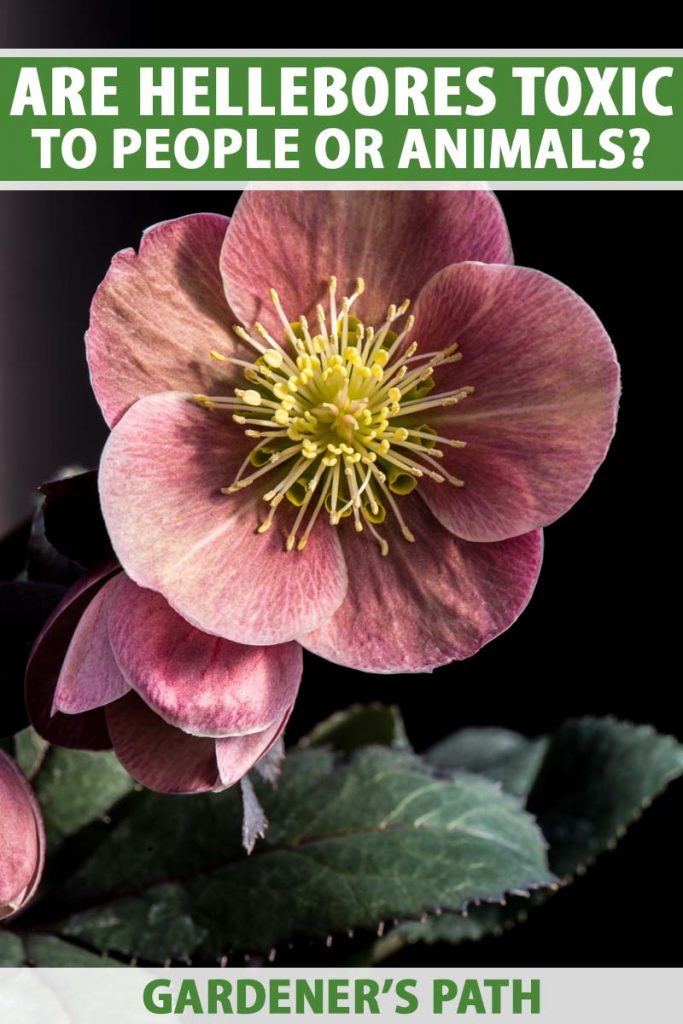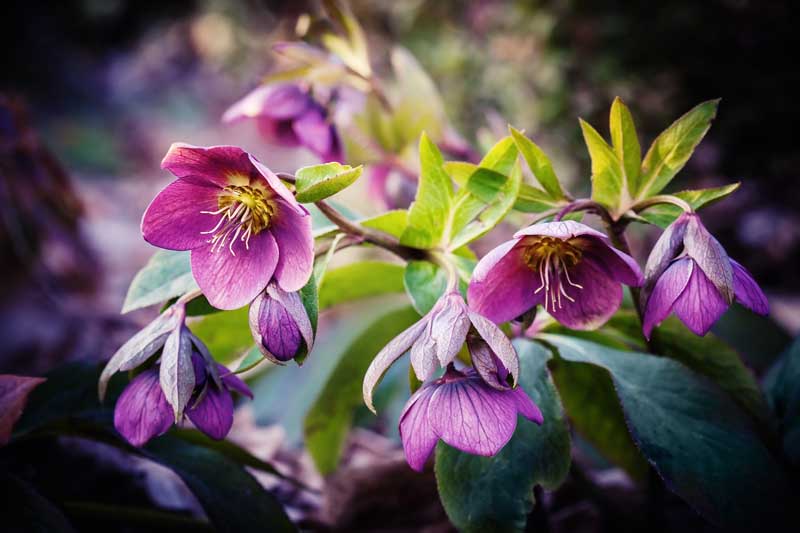The natural world is rife with toxins – many of them in some of our favorite plants – including the attractive and widely appreciated hellebores. Hellebore (Helleborus spp.), a member of the buttercup family, is toxic to dogs, cats, and horses. Thankfully, its foul taste often prevents them from eating it in large quantities. We link to vendors to help you find relevant products. If you buy from one of our links, we may earn a commission. Drying or storage of plant material will not destroy these toxins. But nonetheless, the beauty that they add to the late winter and early spring garden is undeniable. And with a proper sense of caution, these blooming perennials can be enjoyed as part of the landscape for years to come.
Know Your Hellebores
Hellebores are often used in floral arrangements around Christmastime, so it’s important to be able to identify them. Children and pets may be tempted to eat the pretty flowers, and you’ll need to keep them out of reach. Hellebores are also known by their common names, Lenten rose, Christmas rose, winter rose, and bear’s foot. False hellebore is also toxic. There are two species of this plant, which are unrelated to Helleborus, and members of the lily family. Veratrum viride is commonly known as white or European white hellebore, while V. album is known as green or Indian hellebore. They produce different toxins than Helleborus, but the symptoms of poisoning are the same.
Symptoms of Poisoning
The leaves, stems, and roots of these plants are all poisonous. Although seldom fatal, your pet (or even your child) can become very ill if any part of the plant is ingested. Seek immediate veterinary or medical treatment if you suspect that any part of the plant has been consumed. In addition to the direct effect of the toxins contained in these plants, they may interact negatively with prescription medications. This can happen in the case of beta-blockers, steroids, and some chemotherapy medications.
Treatment
It’s important to seek medical advice immediately if you suspect your child or pet has eaten any part of the hellebore. In the US, call the poison control help hotline at 1-800-222-1222, or get help online via their website. Do not induce vomiting or take any other reactive measures unless directly to do so by an emergency health care provider. For pets, you may call the ASPCA Animal Poison Control Center at 888-426-4435. If your pet ate a relatively small amount, you may be instructed to thoroughly rinse his or her mouth. If your pet ate a large quantity of the plant, or if serious symptoms are developing, you will need to bring the animal in for further treatment.
Veterinary Diagnosis
If you suspect that your pet has eaten hellebore, you should bring a sample of the plant with you if possible when you go to the vet. Your vet will check your pet’s liver and kidney function. This will likely involve a complete blood count, biochemistry profile, and urinalysis. It is critical for the vet to examine the animal’s heart, since hellebore can cause serious and often fatal heart problems, such as heart palpitations and contractions. While this can often be successfully treated if caught early, it is recommended that you do what you can to keep your pet calm after you return home to avoid any unnecessary stress on his or her heart. In the case of horses, the vet may go to the pasture and paddock to see if grazing patterns can identify the particular species that was eaten. Older horses are especially vulnerable to this type of poisoning.
Medicinal Uses
There is an old saying that the dose makes the poison. What does this mean? While a high dose of a particular chemical may be toxic, a lower dose may even be used as a medicine. The use of hellebore rhizomes in medicine dates back millennia, with the first recorded mention dating back to 1400 BC. The ancient Greeks used it to treat epilepsy and mental disorders, and herbalists from the Middle Ages used it extensively. Its use as an herbal treatment to kill intestinal worms lasted into the 1700s. Herbalists used it to induce vomiting, with the idea that it would expel worms found in the stomach. The only current and often seen medical use of the plants is to treat mange in animals.
What Toxins Are Present?
Hellebores contain a number of different toxins, and the compounds known as cardiac glycosides are particularly dangerous. As you can guess from the term “cardiac,” these chemicals affect the heart. Plants often modify toxins to protect themselves from damage, and one of the ways they do this is by attaching a sugar molecule to the toxin. These chemicals are known as glycosides. The cardiac glycosides in hellebores include helleborin, helleborine, and hellebrin. Other toxins include a group of detergent-like compounds known as saponosides, and a derivative of the common buttercup family toxin, ranunculoside, known as protoanemonine.
Why Do Hellebores Make These Toxins?
Why are toxins so widespread? Are hellebores out to get us? Highly unlikely. What is much more likely is that these compounds serve a purpose in the biology of the plants. Toxic compounds often protect plants from the ravages of insects, bacteria, or fungi. A study on toxic plants that included stinking hellebore (H. foetidus) found that their cardiac glycosides protected the plants from insects.
Safely Grow Hellebore
Our hope is that this article will give you the information you need to safely grow these beautiful flowering plants. And if you are displaying the flowers in your house, make sure to keep them out of reach of children or pets.
If your pets have access to hellebores in your garden, keep an eye out for vomiting, diarrhea, and depression, and call your vet immediately if you suspect that your pet has eaten them. Have you encountered problems with hellebore toxicity? If so, let us know in the comments. And if you want to know more about hellebore plants, then check out some of our other guides next:
How to Grow Hellebores, the Winter-to-Spring Sensation How to Divide and Transplant Hellebores 7 Tips for Planting Hellebore Seeds
© Ask the Experts, LLC. ALL RIGHTS RESERVED. See our TOS for more details. Uncredited photos: Shutterstock.


